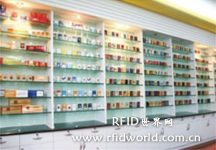
RFID application solutions in the tobacco industry
[ad_1]
At present, in the tobacco industry, the first phase of the promotion of the cigarette production and operation decision-making management system (Project No. 1) has been basically completed, and the second phase of the “State Tobacco Monopoly Administration Office Automation System” has been launched nationwide. With the deepening of work, some urgent problems have gradually emerged. First of all, it is an extremely large and cumbersome task to uniformly manage cigarette information across the country. In addition to the need to track cigarette information, it also needs to confirm the information in multiple links; secondly, the traditional barcode system has obvious shortcomings , Such as easy contamination, breakage, need to stop and wait for scanning one by one, etc., batch reading efficiency is not high, unable to meet the needs of fast and accurate. In response to the above problems, Shenzhen Wanquan Intelligent uses RFID radio frequency identification technology as a more feasible solution.

The digital management system is used to integrate the overall warehouse management, that is, the digital warehouse management system of the tobacco commercial enterprise. It can not only meet the requirements of the distribution operation mode in modern logistics, but also be suitable for large-scale busy logistics and distribution, ensuring high-quality data exchange in the supply chain. At the same time, it can improve the transparency of the supply chain through tracking solutions from the enterprise production line. , Can effectively curb or even eliminate extracorporeal circulation, and can play a huge role in tobacco monopoly management.

1. RFID system composition and working principle
The most basic RFID system consists of three parts: RFID electronic tags, readers, and antennas. The reader is used to read or write RFID electronic tag information, and the antenna plays a role in transmitting radio frequency signals between the RFID electronic tag and the reader. The RFlD system can also be connected to an external computer through the communication interface of the reader for data exchange, as shown in Figure 1.

As shown in Figure 1
The basic working process of the RFID system is: the reader sends a certain frequency of the radio frequency signal of the reader through the transmitting antenna. When the electronic tag enters the working area of the transmitting antenna, an induced current is generated. The electronic tag gains energy and is activated. The built-in transmitting antenna sends out; the system receiving antenna receives the carrier signal sent from the radio frequency card and transmits it to the reader through the antenna adjuster. The reader demodulates and decodes the received signal and then sends it to the background main system for related processing. The system judges the legitimacy of the card according to the logical operation, makes corresponding processing and control for different settings, and sends out instruction signals to control the action of the actuator.
1. The RFID system consists of three parts:
Electronic tags (Tag): Composed of coupling elements and chips, each tag has a unique electronic code (UID), attached to the object to identify the target object; when illuminated by radio frequency signals, it can reflect back to carry digital code information The radio frequency signal is processed and identified by the reader, and can be reused, and the number of repeated erasing and writing is more than 100,000 times.

tobacco
Reader: A reader or reader is used to generate and transmit radio frequency signals and receive the radio frequency signals reflected by the electronic tag. After processing, the tag data information can be obtained, and sometimes the tag information can be written into it. The equipment can be designed to be handheld or fixed;
Antenna: Transmit radio frequency signals between the tag and the reader.
Usually the frequency used by the reader to send is called the operating frequency of the RFID system. Common operating frequencies include low-frequency 125kHz, high-frequency 13.56MHz and ultra-high frequency 915MHz, etc. The system uses ultra-high frequency 915MHz.
[ad_2]



